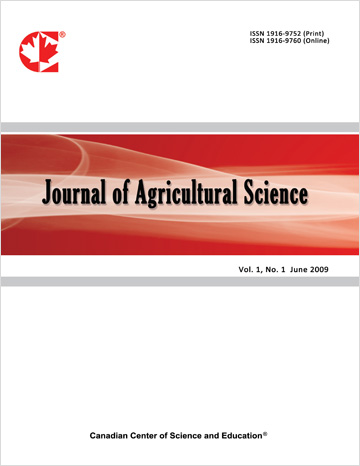Exploring Opportunities for Enhancing Innovation in Agriculture: The Case of Oil Palm Production in Ghana
- S. Adjei-Nsiah
- O. Sakyi-Dawson
- T. W. Kuyper
Abstract
We carried out a study using key informant interviews, focus group discussions and individual interviews to explore opportunities to enhance innovation in the oil palm sector in Ghana. Current technical innovations at the farm level are insufficient to promote sustainable oil palm production and to alleviate poverty because of overriding institutional constraints at the larger-than-farm level. Oil palm was selected for the study for three main reasons: (1) It is considered a national priority crop because of its potential for reducing poverty, (2) It has a wide geographical coverage and (3) It is considered as both food and cash crop. Oil palm has evolved in the past 40 years from a public-sector to a private-sector crop. The study identified the following main actors in oil palm production: small private farms that produce about 80% of the crop; large-scale industrial estates with their network of smallholder and out-grower farmers who produce to supply their large-scale mechanized processing mills; small-scale semi-mechanized processing mills, medium-scale mechanized mills and secondary processors. Opportunities that will make it rational for farmers to invest in increased production and improved sustainability include: (1) creating institutional conditions that will enable small-scale processors to be integrated into the value chain; (2) organising farmers to be able to negotiate for better deals for themselves; (3) improve system of distribution of improved planting material in regions where accessibility to seedlings of the high-yielding tenera hybrid variety is difficult; and (4) developing new tenancy rules and arrangements that improve the income of tenant farmers and encourage them to invest in increased productivity.
- Full Text:
 PDF
PDF
- DOI:10.5539/jas.v4n10p212
Journal Metrics
- h-index: 67
- i10-index: 839
- WJCI (2023): 0.884
- WJCI Impact Factor (2023): 0.196
Index
- AGRICOLA
- AGRIS
- BASE (Bielefeld Academic Search Engine)
- Berkeley Library
- CAB Abstracts
- ChronosHub
- CiteSeerx
- CNKI Scholar
- Copyright Clearance Center
- CrossRef
- DESY Publication Database
- DTU Library
- e-Library
- EBSCOhost
- EconPapers
- Elektronische Zeitschriftenbibliothek (EZB)
- EuroPub Database
- Excellence in Research for Australia (ERA)
- Google Scholar
- Harvard Library
- IDEAS
- iDiscover
- Jisc Library Hub Discover
- JournalTOCs
- KindCongress
- LIVIVO (ZB MED)
- LOCKSS
- Max Planck Institutes
- Mendeley
- MIAR
- Mir@bel
- NLM Catalog PubMed
- Norwegian Centre for Research Data (NSD)
- Open J-Gate
- OUCI
- PKP Open Archives Harvester
- Polska Bibliografia Naukowa
- Qualis/CAPES
- RefSeek
- RePEc
- ROAD
- ScienceOpen
- Scilit
- SCiNiTO
- Semantic Scholar
- SHERPA/RoMEO
- Southwest-German Union Catalogue
- Standard Periodical Directory
- Stanford Libraries
- SUDOC
- Swisscovery
- Technische Informationsbibliothek (TIB)
- Trove
- UCR Library
- Ulrich's
- UniCat
- Universe Digital Library
- WorldCat
- WRLC Catalog
- Zeitschriften Daten Bank (ZDB)
Contact
- Anne BrownEditorial Assistant
- jas@ccsenet.org
